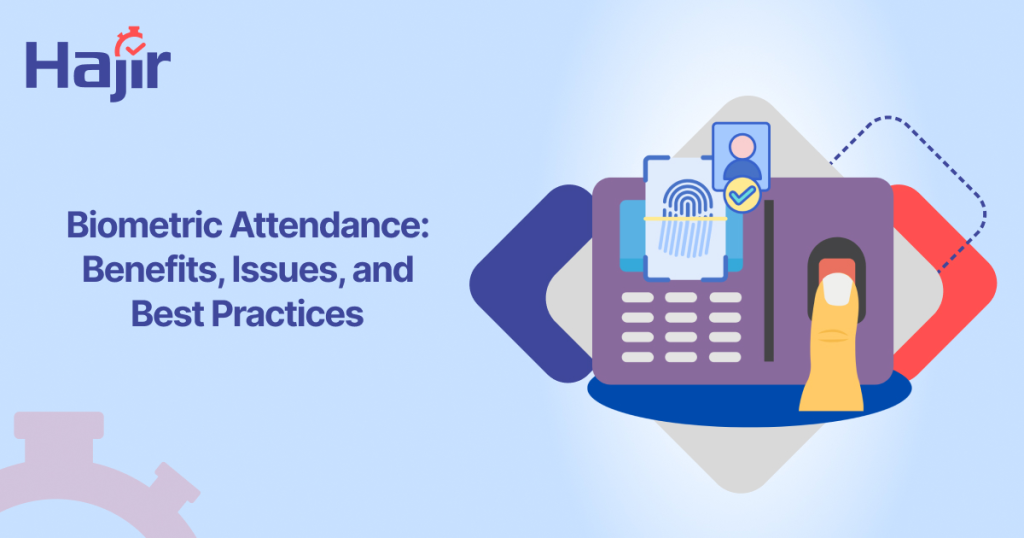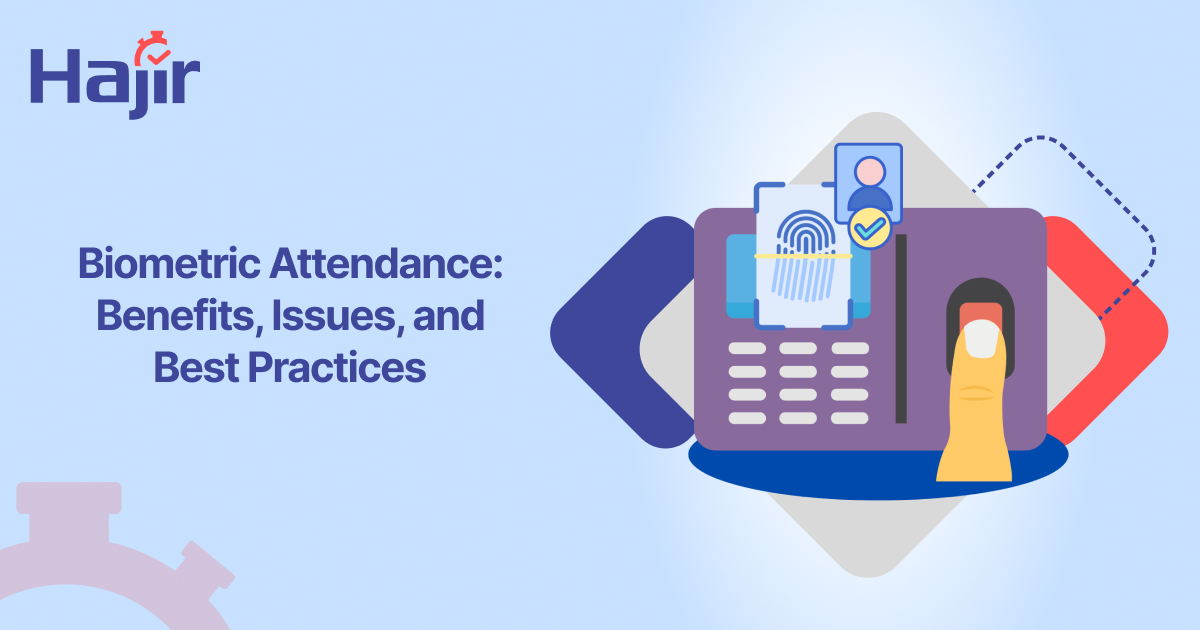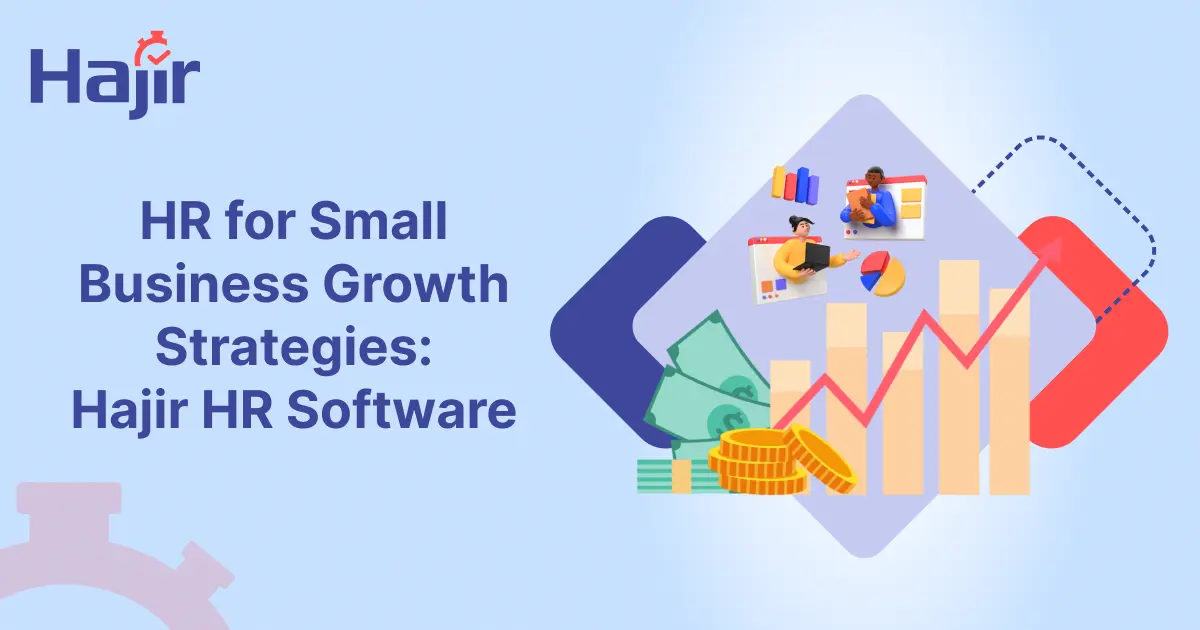Biometric Attendance: Benefits, Issues, and Best Practices
Biometric attendance has transformed the manner in which time and presence in the workplace are handled in an organization. It does not work with conventional systems with a manual registry, swipe card, or PIN code. It rather uses distinct physical characteristics such as fingerprints, facial recognition, or iris scans. This makes sure that the data used is properly collected and it gets rid of most of the loopholes, such as buddy punching or proxy attendance.
The system can also be combined with modern HR software that enables access to real-time information about workforce trends and allows payroll to execute quicker. With businesses requiring increased efficiency, transparency, and accountability, biometric attendance stands out as one of the most trustworthy options.

Benefits of Biometric Attendance
1. Accurate Time Tracking
Biometric attendance systems ensure that the check-in and check-out records of the employees are accurate and error-free. Unlike card-based or manual systems, biometric data such as fingerprints or facial recognition cannot be duplicated and forged. This gives the organizations credible records of time, which can be used to process the payroll, compliance, and performance analysis.
2. Elimination of Buddy Punching
The most common issue with the conventional punch cards or PIN-based attendance systems is the buddy punching issue, where one employee records in on behalf of another employee. Biometrics eliminates this problem entirely since two people will never share the same fingerprint, face, or iris scan. This will give equity, remove time thefts, and give credibility in the attendance process.
3. Enhanced Workplace Security
Besides attendance, biometric systems have often been integrated with access controls in the workplace. Only verified employees are permitted access to some of the zones, and opportunities to break in are restricted. This enhanced security will prevent the wrong personnel from entering areas of restricted access in any business where there is sensitive information or expensive machinery.
4. Time and Cost Savings
Manual attendance systems need constant supervision, corrections, and approvals, which take up precious HR time. Biometric systems facilitate automation of this process by directly capturing correct data, thereby minimizing the workload of the administrative personnel. They also reduce payroll errors, working hours disagreements, and fraudulent reporting. This automation reduces the operational expense and also enables the HR teams to work on more strategic projects.
5. Improved Employee Accountability
Employees will pay more attention to schedules when they realize that the attendance monitoring is performed in a transparent and accurate way. This discourages lateness, early leaving, and absenteeism and instills the spirit of punctuality. Increased accountability leads to better discipline within an organization, better flow of work, and increased productivity.
Issues with Biometric Attendance
1. Concerns over Privacy
Employees might not want to provide biometric data because of fear of it being misused. Without clear data protection policies, earning trust among the employees can become a major problem.
2. Technical Limitations
Fingerprint scanners are susceptible to failure when fingers are dirty, damaged, or wet. Similarly, facial recognition will not work effectively in dark environments or in cases where employees put on masks and this will decrease system reliability.
3. The High Cost of Implementation
Small and medium businesses can find the initial costs of biometric hardware and software to be very expensive. Especially in cases where the company wants to move to a large number of locations.
4. Risks Related to System Failures
Biometric systems can be closed temporarily in case of a power outage, internet outage, or the failure of a device. This can cause gaps in attendance unless they are addressed early.
5. Integration Challenges
The other issue about the implementation of biometric systems in certain organizations is the failure to integrate them with the HR or payroll systems. Solving this issue will require technical expertise and additional cost.
6. Resistance to Adoption
Not every employee feels comfortable working with new technology. There will always be resistance to the use of biometric systems unless proper awareness and training are conducted.
Best Practices for Implementing Biometric Attendance
To ensure the application of biometrical attendance is a success, organizations must ensure that they make correct decisions that will create a balance between efficiency, security, and user trust. The recommended best practices include the following:
- Choose the right form of biometric technology (fingerprint, face recognition, or iris scan) based on the conditions and nature of the workplace.
- Ensure maintenance of systems by updating and servicing them on a regular basis.
- Inform the employees about how the information will be gathered, stored, and secured.
- Use biometric attendance along with HR software to generate the correct salaries and monitor the performance of employees.
- Consider a backup cloud platform that can be utilized in case of hardware issues.
- Promote employee training so that it is adopted naturally and met with little resistance.
How Hajir Can Help with Biometric Attendance
Hajir provides an effective platform that modernizes the biometric attendance, integrating it with the advanced HR functions. It helps companies to monitor real-time attendance, create automated payrolls, and create insightful workforce data, in comparison to time tracking alone. Being a cloud-based platform allows data to be accessible and safe at all times and protects the privacy of employees through encryption.
With a scalable design, Hajir can support small and large organizations without the necessity to interrupt the current HR processes. Businesses can eliminate the manual errors, save on expenses, and create a culture of transparency in attendance that benefits both the employers and the employees.
Conclusion
Biometric attendance goes beyond a mere digital upgrade, but it is a viable solution to achieve accuracy, save time, and create a culture of responsibility. Even though issues like privacy and cost are inevitably going to arise, they can be addressed with proper data protection, planning, and employee awareness. Through Hajir HR Software, companies can not only take advantage of the accuracy of biometric attendance but also enhance accountability, security, and efficiency within the workplace.
Recent Post
HR Software Built for Every Industry
HajirHR fits your business requirements and does not matter what particular industry or trade is. Our cloud-based features can cater to the HR challenges of any size team to the enterprise workforce.

Healthcare
Make sure you meet the rules of licensing, certifications, and labor laws. Track the vacation of nurses, doctors, and support staffs, schedule leave, and in general manage all attendance via mobile and alerts on renewals of contracts.

Construction
Remote location managing onsite workers, contractors, and engineers by way of on-site check-ins, shift scheduling, and mobile attendance. It is suitable to use on field-intensive projects.

Manufacturing
Handle shift rotations, safety incidents, and asset assignments easily. Integrate your payroll and reporting for seamless plant-wide coordination.

Technology & IT
Onboard and monitor the performance of hybrid and remote technology groups with cloud-based subsys and project roles, besides equip allocation and use monitoring.

Energy & Utilities
Manage safety protocols, testing schedules, and field attendance with GPS-based tracking and mobile-friendly HR tools.

Education
Manage teaching personnel, contracts, certifications and academic calendars- on a digital platform- flexibly- in case of schools and institutions.

Retail & Hospitality
Make it easier to handle high turnover onboarding, complicated shift schedules, and multi-store operations using easy-to-operate kiosk-ready onboarding systems.

Staffing Agencies
Manage high volumes of applicants, monitor referrals, create dynamic reports, in order to simplify operation of temporary or contract workforce.




